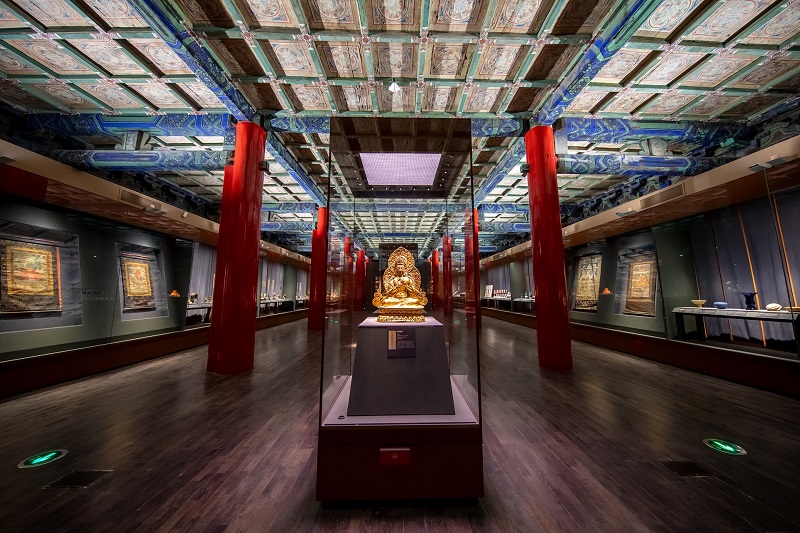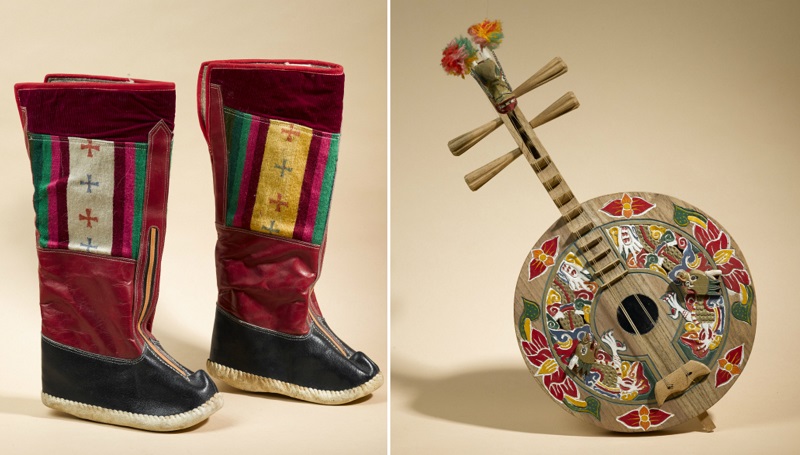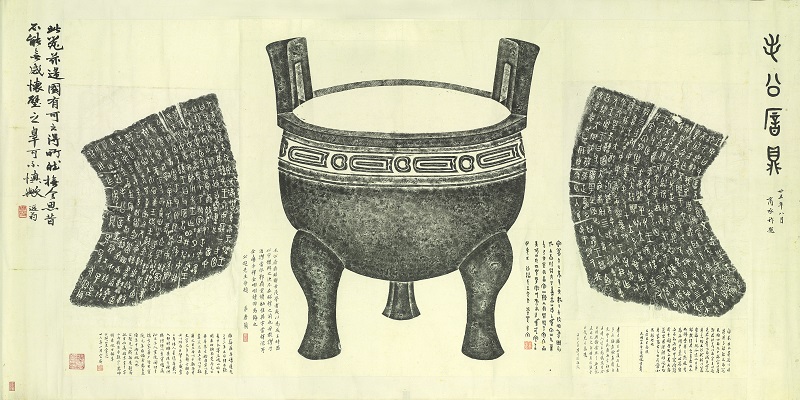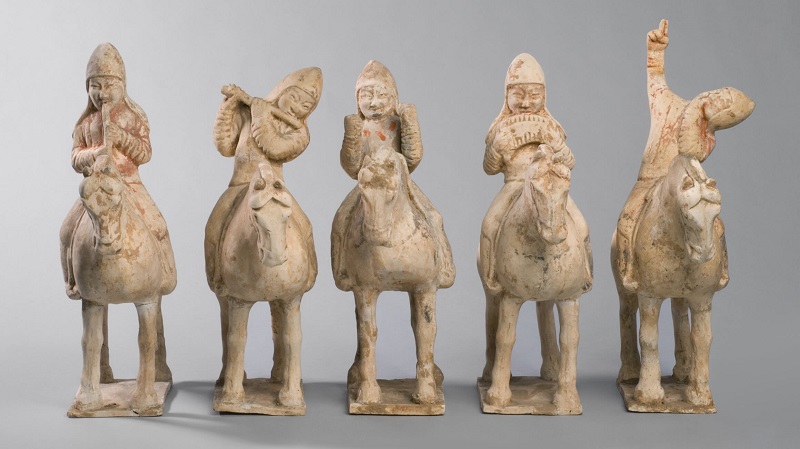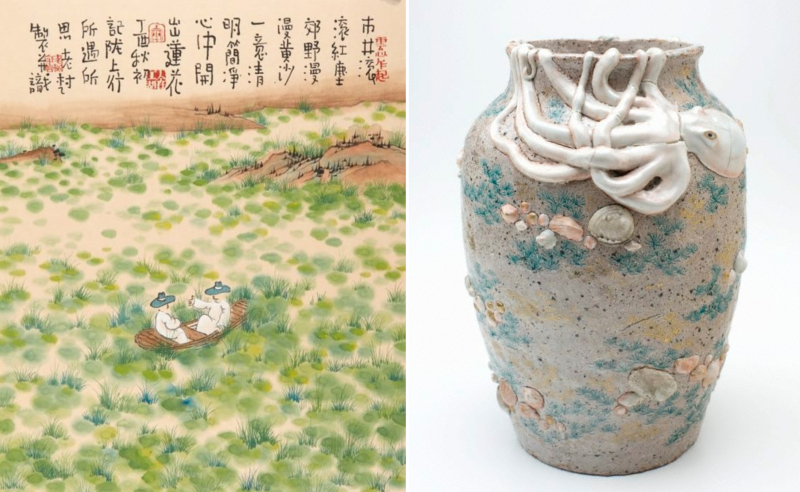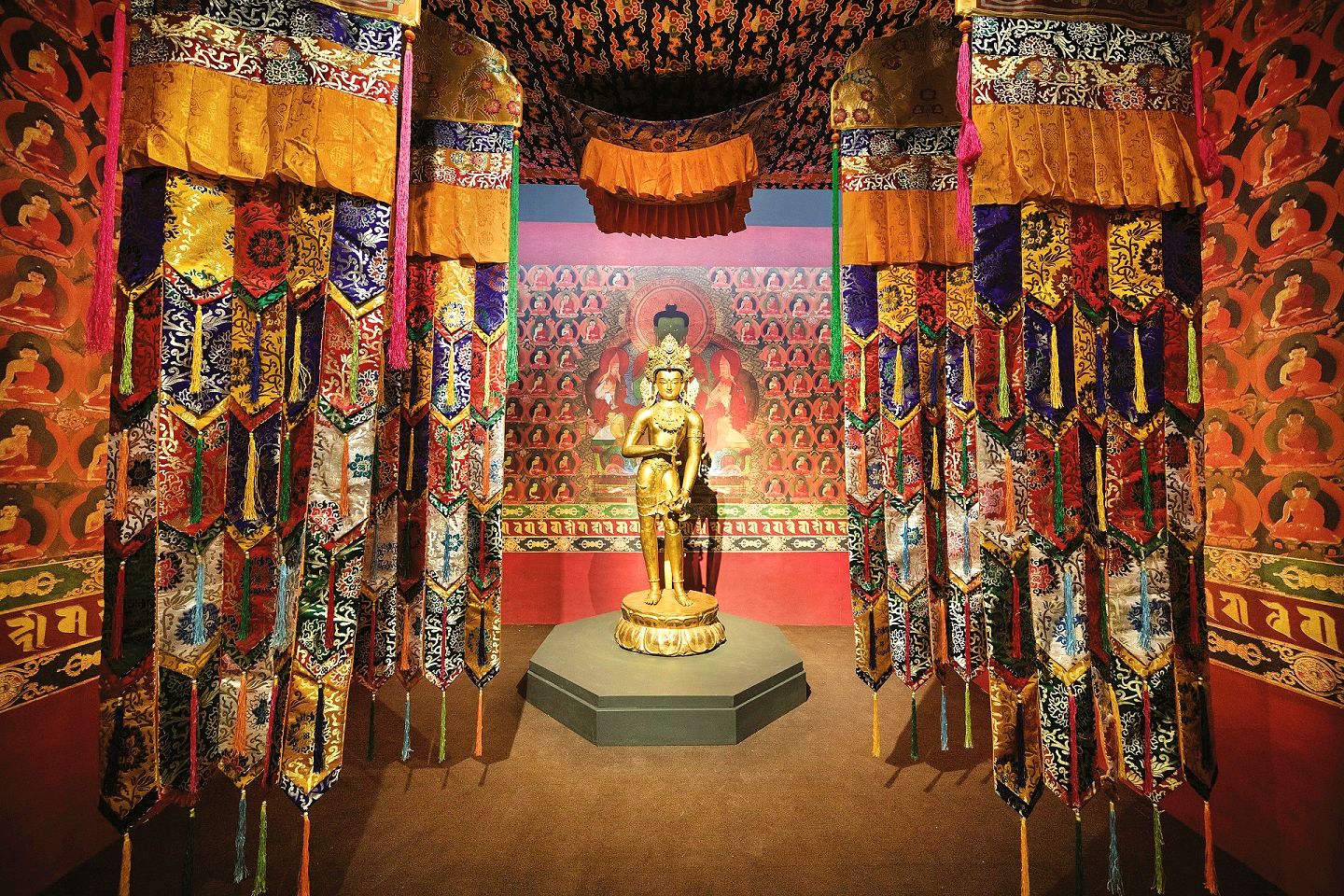
The Fortune and Longevity of Sumeru An Encounter between the Tashi Lhunpo Monastery and the Palace Museum (Photo: The Palace Museum)
If you are away from home during the upcoming Lunar New Year celebrations, visiting an exhibition that celebrates the majesty of Chinese art forms is a good way to fete the occasion. From ethnic Chinese cultures to the Panchen Lama’s contribution to the Qing Court and the complexities of seal-script calligraphy, there is much to feed your soul as we usher in the Year of the Rat.
The Fortune and Longevity of Sumeru: An Encounter between the Tashi Lhunpo Monastery and the Palace Museum
Throughout the Qing dynasty, the Panchen Lamas from the Tashi Lhunpo Monastery in Tibet and the central government in China maintained a tributary relationship with regular exchange of tribute and imperial favour. The relationship is evidenced by numerous items in the collections of the Palace Museum and Tashi Lhunpo. This exhibition presents 224 of the most precious works from these two collections in a display of the Panchen Lamas’ contributions to the Qing court’s establishment of a unified, multi-ethnic country, while paying homage to the cultural and historical significance of the unique arts and heritage of the Tashi Lhunpo Monastery.
The Palace Museum, Beijing, China. Until Feb 29. RMB40. For more information, see here.
A Riot of Blossoms in Shanghai: New Insights into the Arts and Crafts of the Ethnic Minorities in China
Beyond the politics, China is hugely multi-ethnic, its civilisation drawing from the integration and contributions of 56 ethnic groups. This variety of cultural attributes are highly noticeable in their distinct humanistic and ecological environments, ways of production and living, and local customs and traditions. This exhibition aims to demonstrate the artistic achievements of China’s 56 ethnic minorities to offer a vivid picture of how they live, work and think, and to introduce visitors from home and abroad to the diversified cultures based on material creativity and the gorgeous spiritual worlds therein. On top of some regular exhibits, new artworks will be arranged and displayed in six sections. They comprise clothing; dyed, woven and embroidered works; metal works; engravings and carvings; lacquerware and rattan bamboo crafts; and mask arts.
Shanghai Museum, Shanghai, China. Until March 22. Free admission. For more information, see here.
Flowing with Grace: The Story of Seal-Script Calligraphy
The course of evolution in Chinese calligraphy and its aesthetic criteria have been the subject of attention for centuries. Flowing with Grace: The Story of Seal-Script Calligraphy introduces viewers to one particular style in this art form, its changes that have taken place over time and the different perspectives for its appreciation.
Even though seal script long ago departed from everyday use in China, it still flourishes today on the basis of its exceptional artistic qualities. The brush methods of seal script may appear simple and the variations of its curving lines limited, but the arrangements and structures of such characters are quite diverse and beautiful. For seal script to attain a realm of curvilinear beauty and graceful flowing, strokes not only need to have fluidity and body but methods of spatial arrangement must also be accommodated. Only then will the unique aesthetic qualities of seal script be manifested.
Notable pieces include ink rubbings from the Duke of Mao tripod, a bronze cauldron that bears the inscription of the Duke of Mao’s contributions to state governance at the time and an “Eternal Blessings” tile end believed to be from the Han dynasty.
National Palace Museum, Taipei, Taiwan. Until March 25. NT$350. For more informatiom, see here.
New Chinese Galleries
The museum’s recently reimagined and reinstalled Chinese galleries let you rediscover 4,000 years of art in China. Visitors can go deeper into the stories behind the objects, which are grouped thematically in four eye-opening sections: Belief in the afterlife; Nature and self-cultivation; Exchanges with the West; and Order in the Imperial Court. The new installation features recently conserved works, improved lighting and a wide variety of objects, including a stunning collection of costumes and textiles, photographs and contemporary art on view together for the first time.
Of special interest is a display of a series of plates — a commentary on the forced migration of millions of people during the recent global refugee crisis — by contemporary Chinese artist and activist Ai Weiwei. The artist is able to relate to feelings of displacement as his family was exiled in western China during the Cultural Revolution of 1966–76.
Philadelphia Museum of Art, Philadelphia, the US. Free with US$25 museum admission. For more information, see here.
Drawing on rich and diverse works of art, primarily from the gallery’s own collection, this exhibition explores the poetic, symbolic and social significance of water in Asian art, particularly from China. In one drop of water is divided into four main themes: “Migration and movements” looks at the ideas of relocation and people travelling over water to find new land or new homes; “Oceans” considers both the visual power of water and its role in economic survival; “Rivers and streams” addresses stories about rivers and their systems, which have significantly changed in the modern era; and “Life in water” explores the natural world. The exhibition features historical ceramics, paintings and lacquer and woodblock prints from across Asia alongside contemporary works.
Art Gallery NSW, Sydney, Australia. Until Dec 2020. Free admission. For more information, see here.
This article first appeared on Jan 20, 2020 in The Edge Malaysia.

